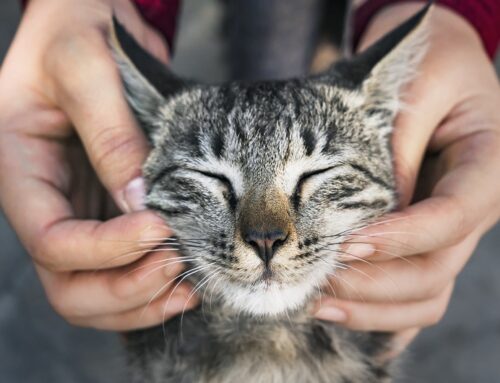Every cat guardian wants a happy and playful cat. One of the easiest ways to see a happy cat is to offer them catnip. But, what if your cat is one of the 40% of cats that doesn’t respond to catnip? Are they resigned to a lifetime of boredom?
Fortunately, a recently published paper may offer some alternatives to catnip. The study focused upon the effects of catnip, silver vine, Tatarian honeysuckle and valerian root on 100 domestic cats and a few tigers (because tigers are the only group of felines that, in general, do not seem to react to catnip). So, what did they find?
First, a little review of catnip: Some plants are known to produce and release chemicals, called allomones, into the air in order to repel damaging insects or to attract predators for these destructive insects. One of these plants is catnip, which happens to produce allomones that apparently have a euphoric effect on cats, including most of the big cats. In general, this effect is quite rare in animals. The effect of catnip is caused exclusively by its smell rather than its taste (as catnip has a sedative effect when ingested). Cats typically respond to catnip by sniffing, licking and biting, rubbing against it, and rolling over, which can be accompanied by drooling and kicking the catnip with their hind feet. Catnip is widely believed to be neither addicting nor harmful.
Indeed, cats have highly developed olfactory (smell) systems. Olfactory stimulation is often an underutilized means of environmental enrichment, which can greatly improve the living environment of cats. In the recent study, nearly all of the domestic cats responded positively to olfactory enrichment (yet none of the tigers responded positively). As was already known, about one out of every three cats did not respond to catnip. However, almost 80% of the domestic cats responded to silver vine (including almost 75% of those that did not respond to catnip) and about 50% to Tatarian honeysuckle and valerian root.
The naturally-occurring chemical “nepetalactone” has been identified as the compound causing the catnip effect. Of the plants tested, catnip had the highest level of nepetalactone. It was only present at marginal levels in the other plants.
However, half a dozen other active components (similar in structure to nepetalactone) were identified in silver vine. The silver vine also contained the highest concentrations of all the other compounds tested. Silver vine, also known as matatabi, has long been used as a cat stimulant in Japan. In fact, the first known report of its effect in the U.S. was in 1906.
Silver vine is part of the kiwi family. It is only known to grow in Asia and must be imported into the U.S., so it’s still a little hard to find. However, as its popularity grows, it should become easier to purchase here. If your cat shows little response to catnip, then silver vine may be the way to go!
Thank you for reading! As a quick reminder, Pet Fest is this Saturday, August 19th from 10:00am to 3:00pm at the Missoula County Fairgrounds. We’ll see you there! =^_^=








